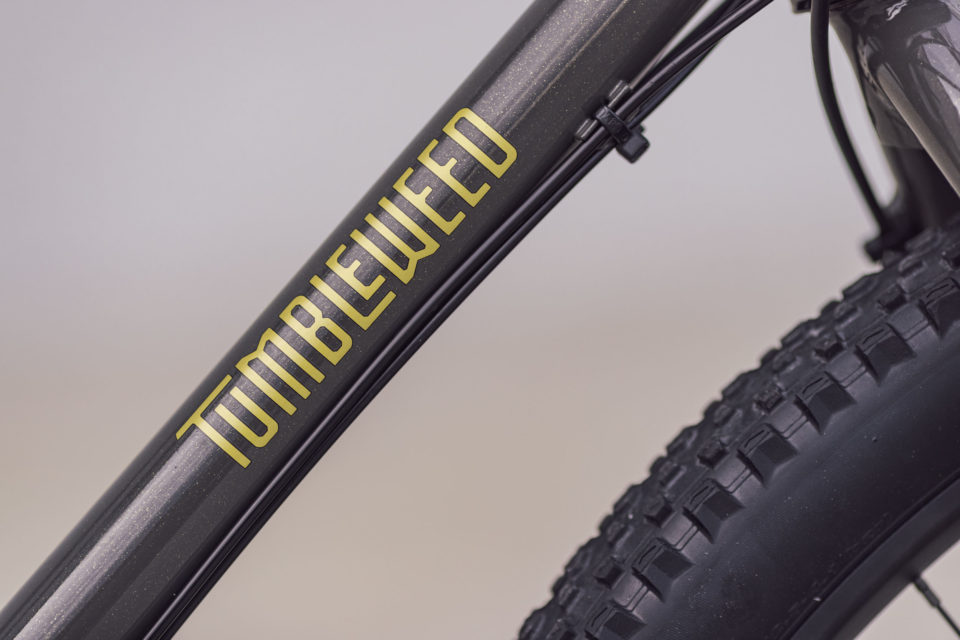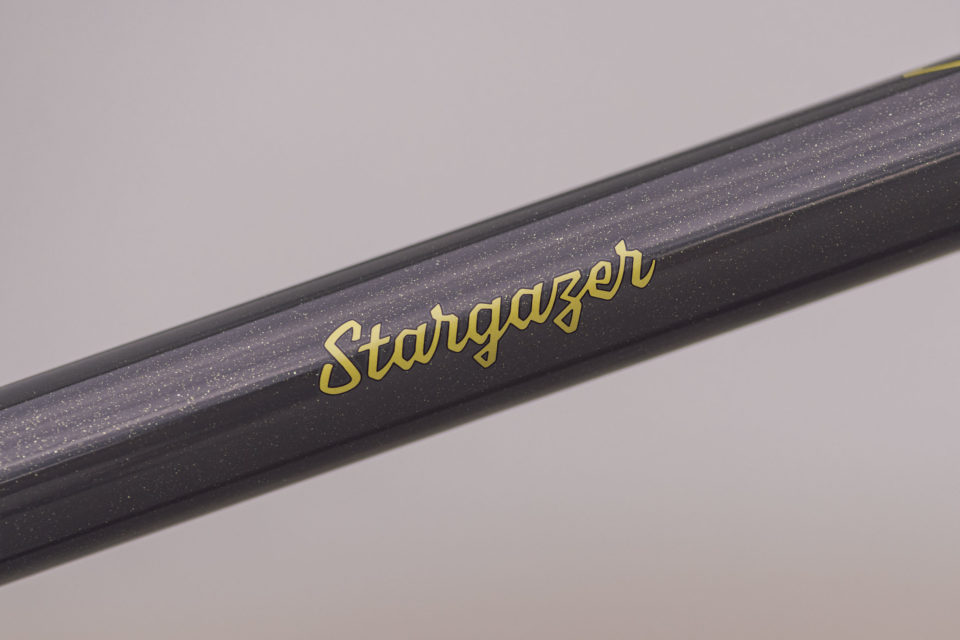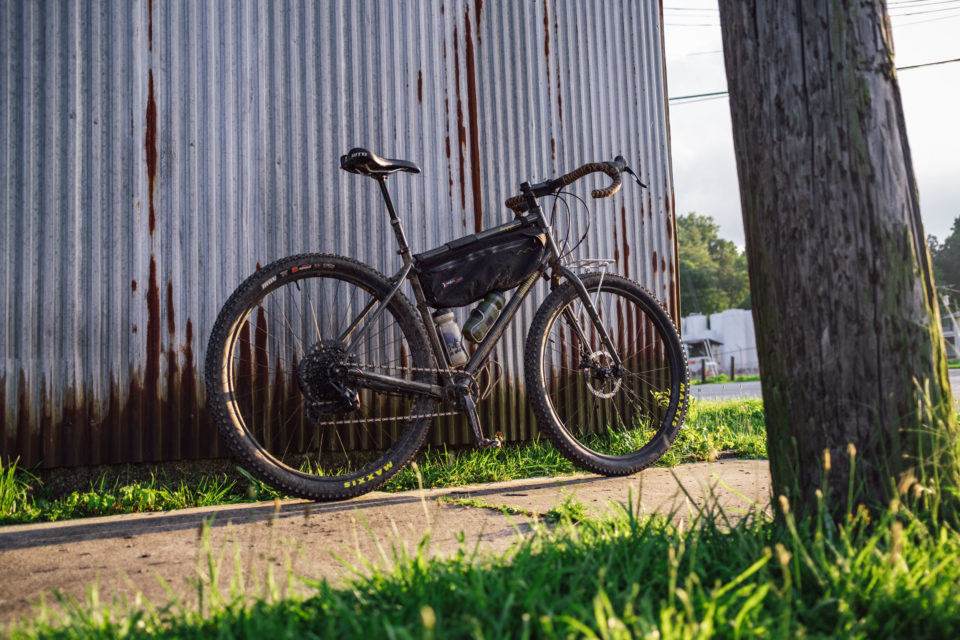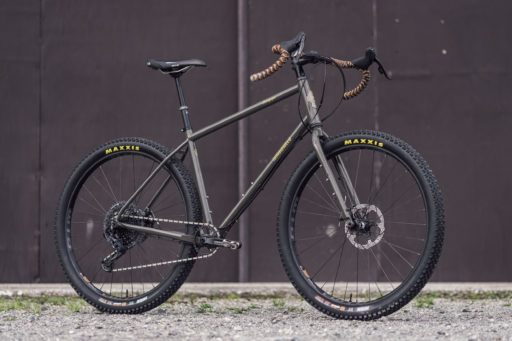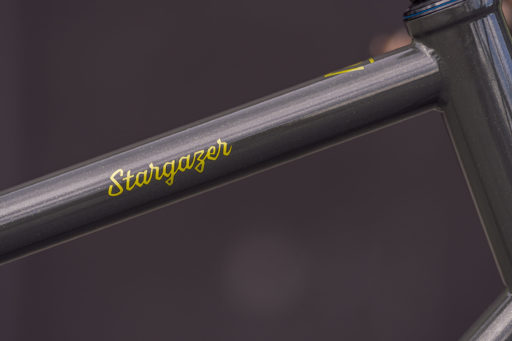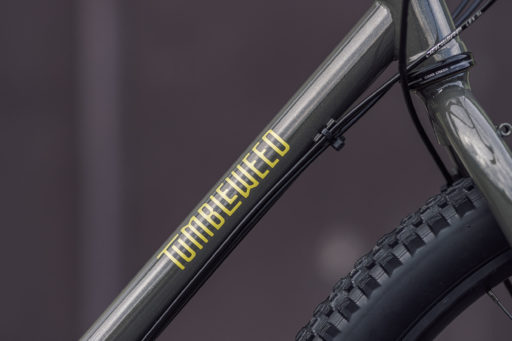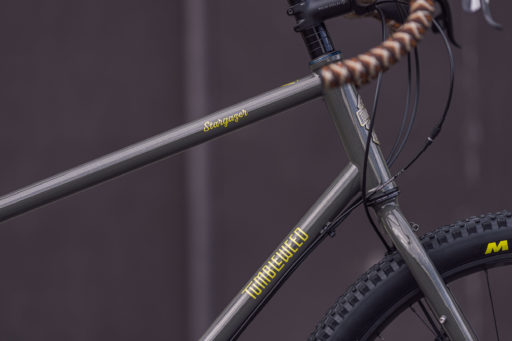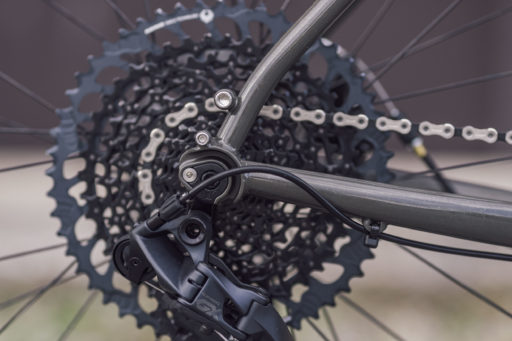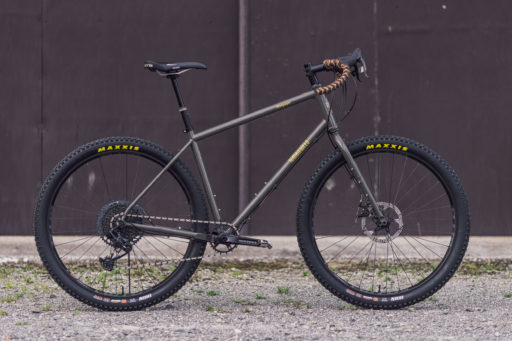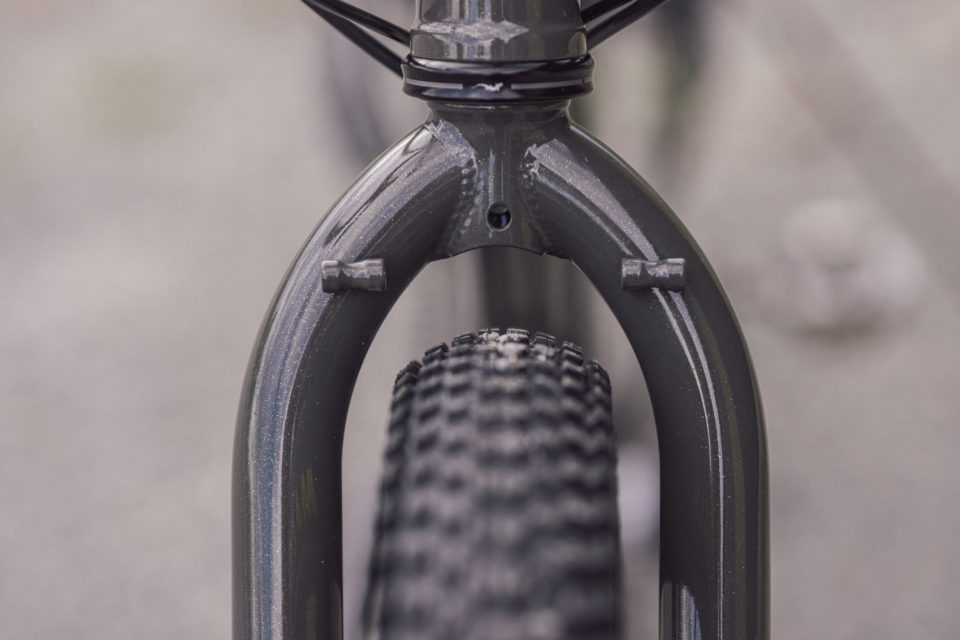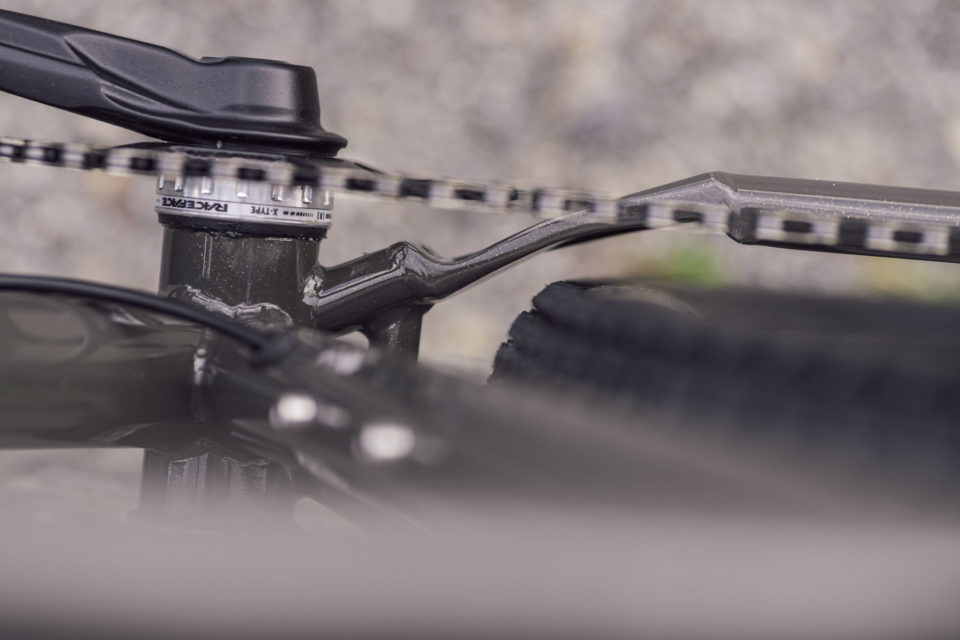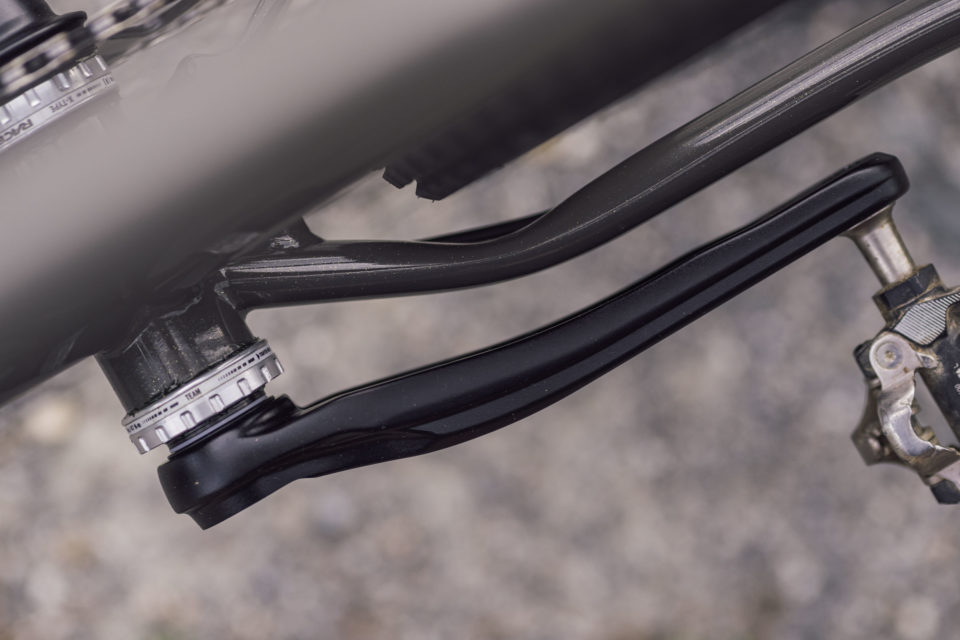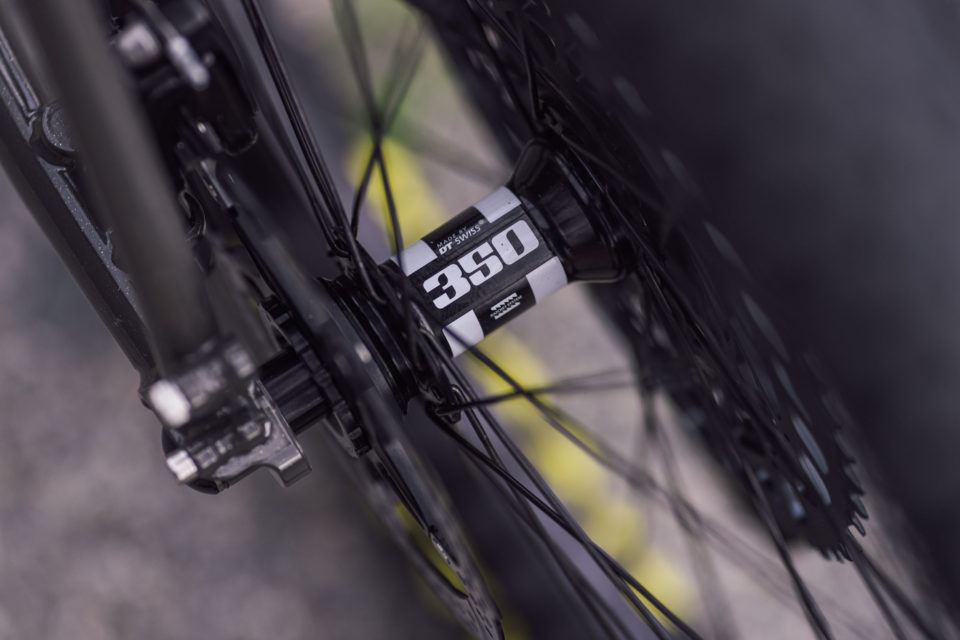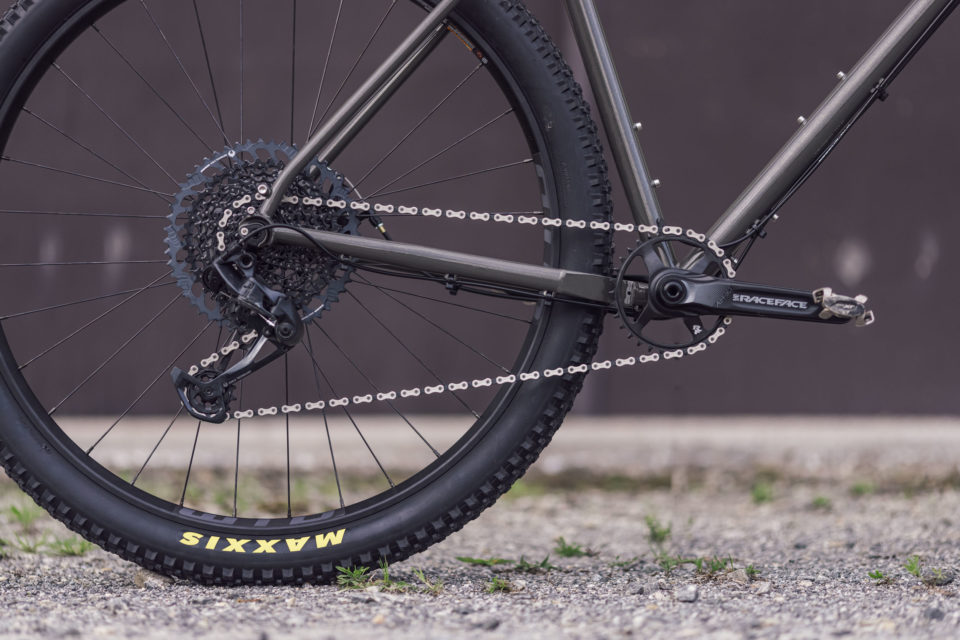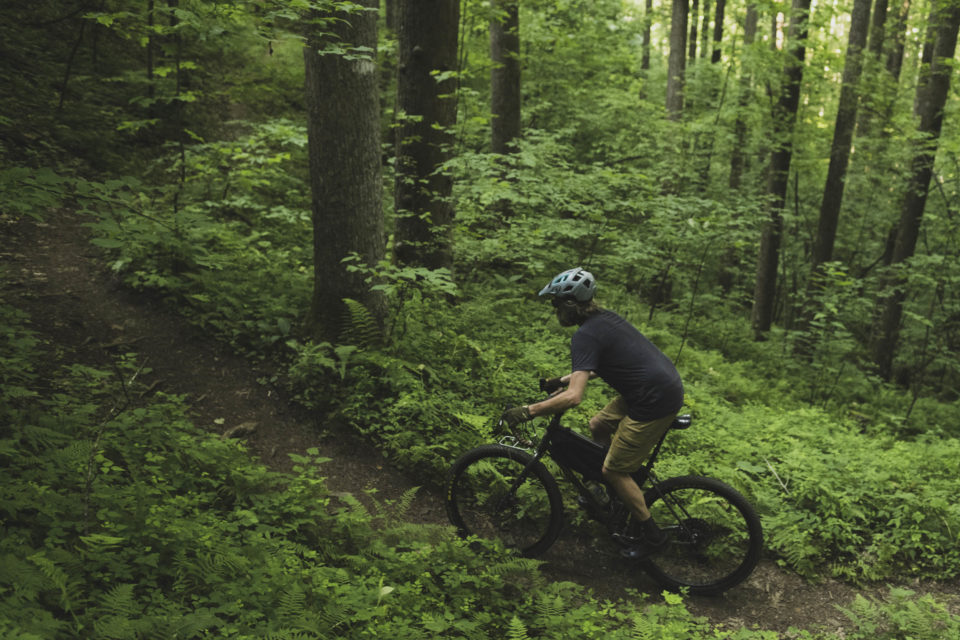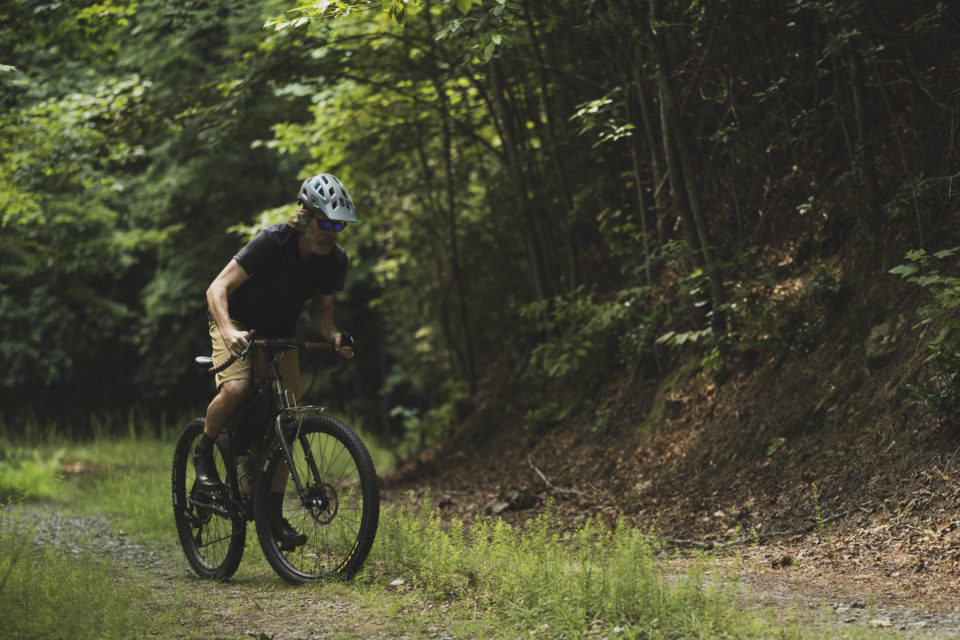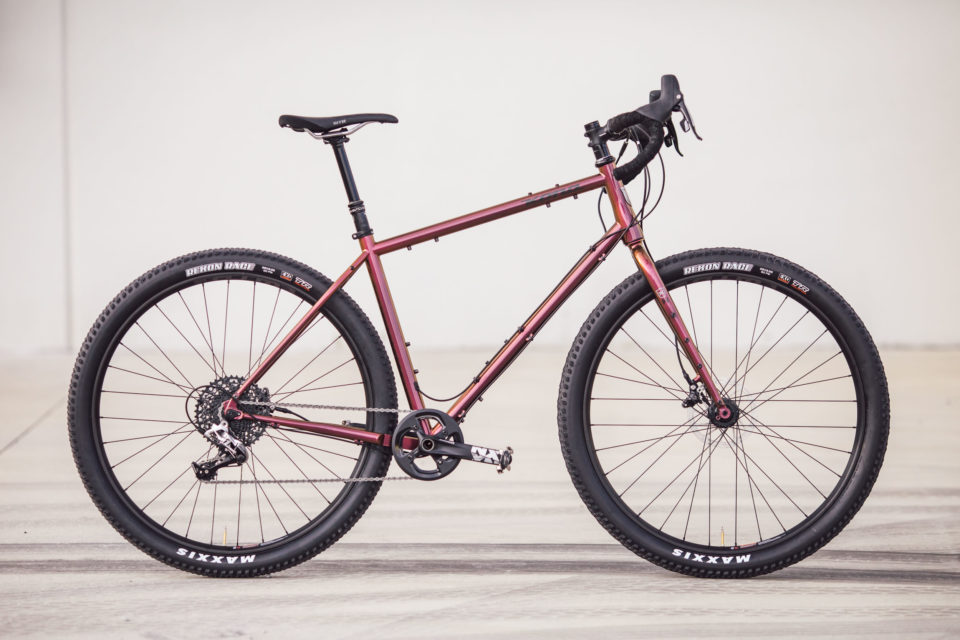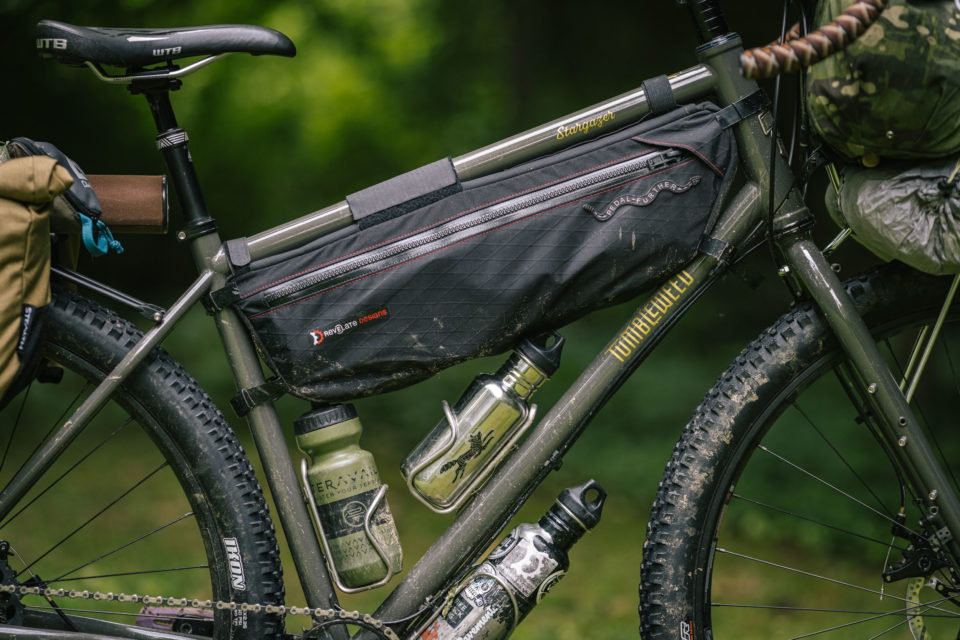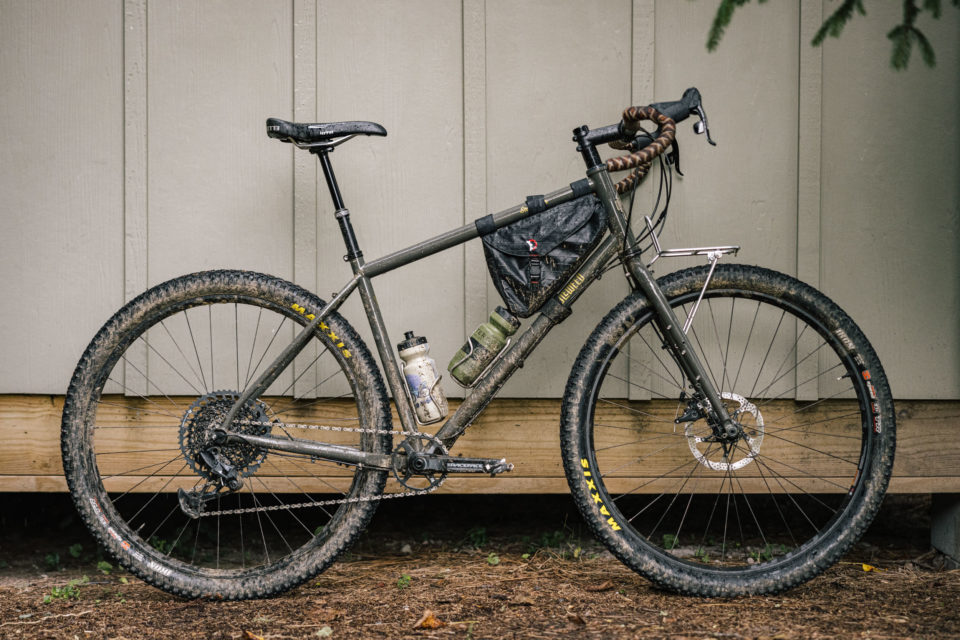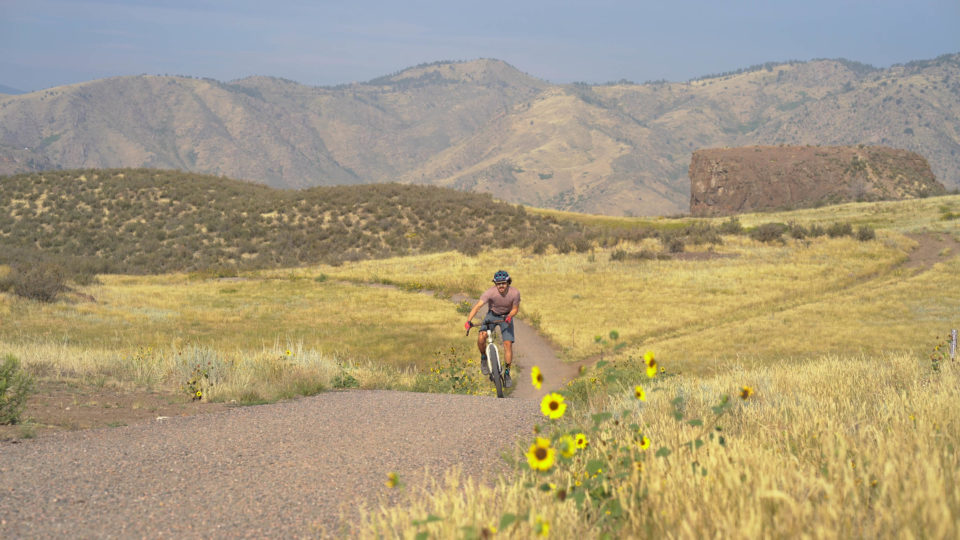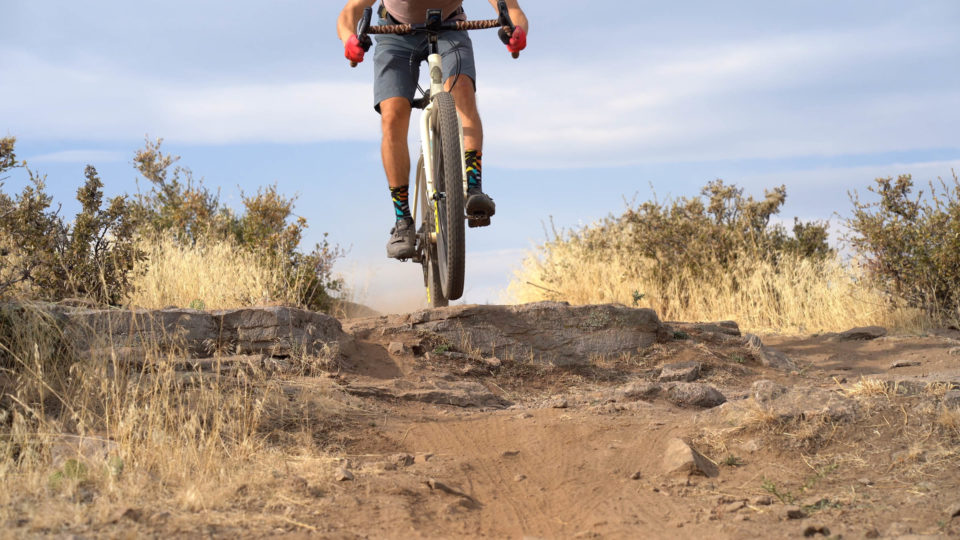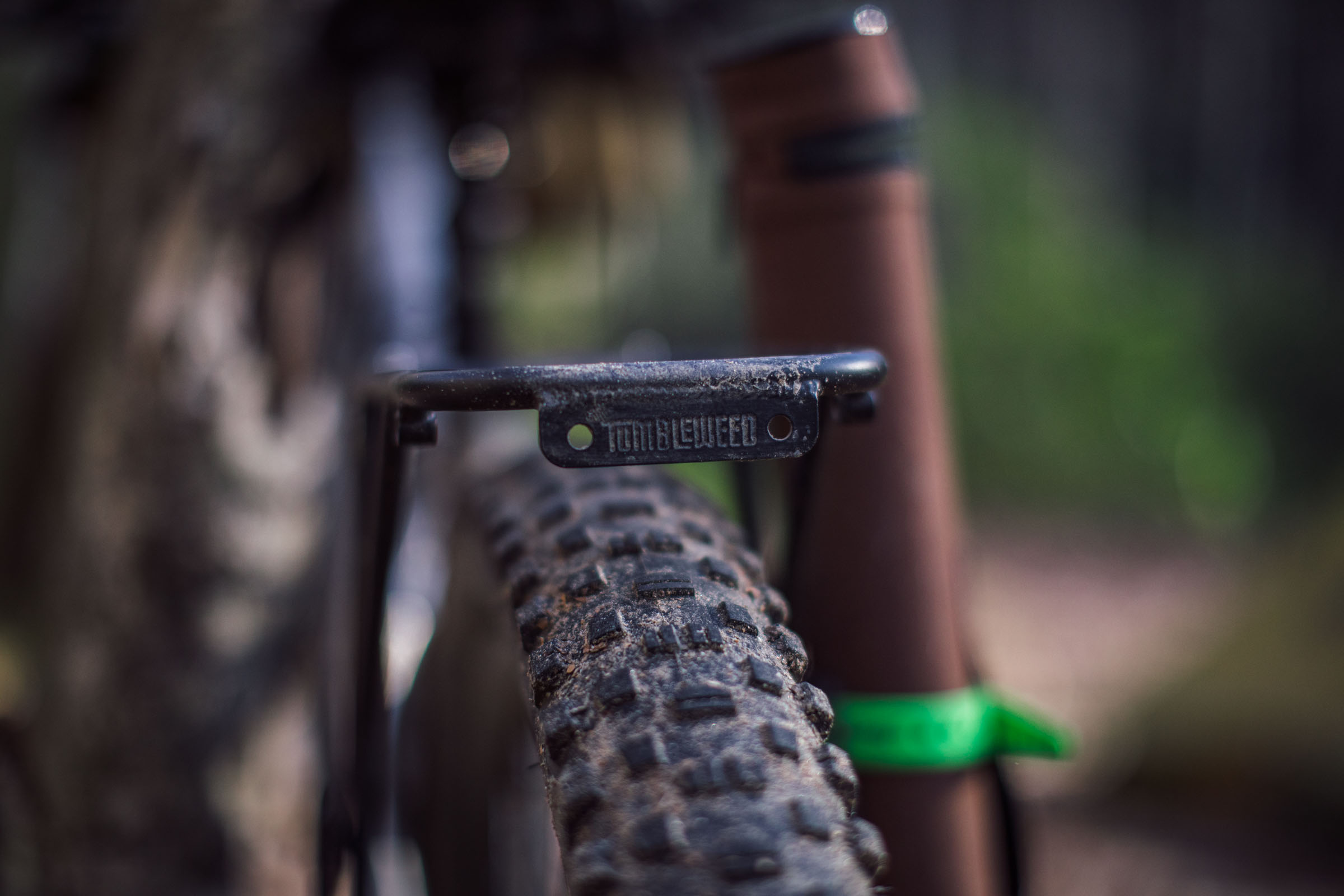Tumbleweed Stargazer Review: Another Steel Drop-bar bike?
Share This
The new Tumbleweed Stargazer is the second bike from the Idaho-based brand, and it’s vastly different from its predecessor. With a frameset featuring Boost spacing, clearance for 29 x 2.5” or 27.5 x 3.0” tires, a mountain bike demeanor, and a few interesting nuances, the Stargazer also sets itself apart from many other bikes in the category. Find our full review here after hundreds of miles trail riding, gravel grinding, and bikepacking…
When Tumbleweed Bicycle Co’s owner and visionary Daniel Molloy got in touch about sending a new bike over for review, I was intrigued straight away and wondered what kind of rig would be on the coattails of the Prospector, the brand’s first and only bike. I wasn’t shocked when I found out it was a drop bar bike. There’s that whole trend thing, and it makes sense for Tumbleweed to diversify its range. But it begged the question: Does the world need another steel drop-bar bicycle? The short answer is yes, in light of the fact that bikes are crazy hard to come by at the moment. And paradoxically, the long answer is also yes, for reasons I’ll get into below. I’ve been riding the all-new Tumbleweed Stargazer for a few months now to dig into that and more. Read on for the full Tumbleweed Stargazer review.
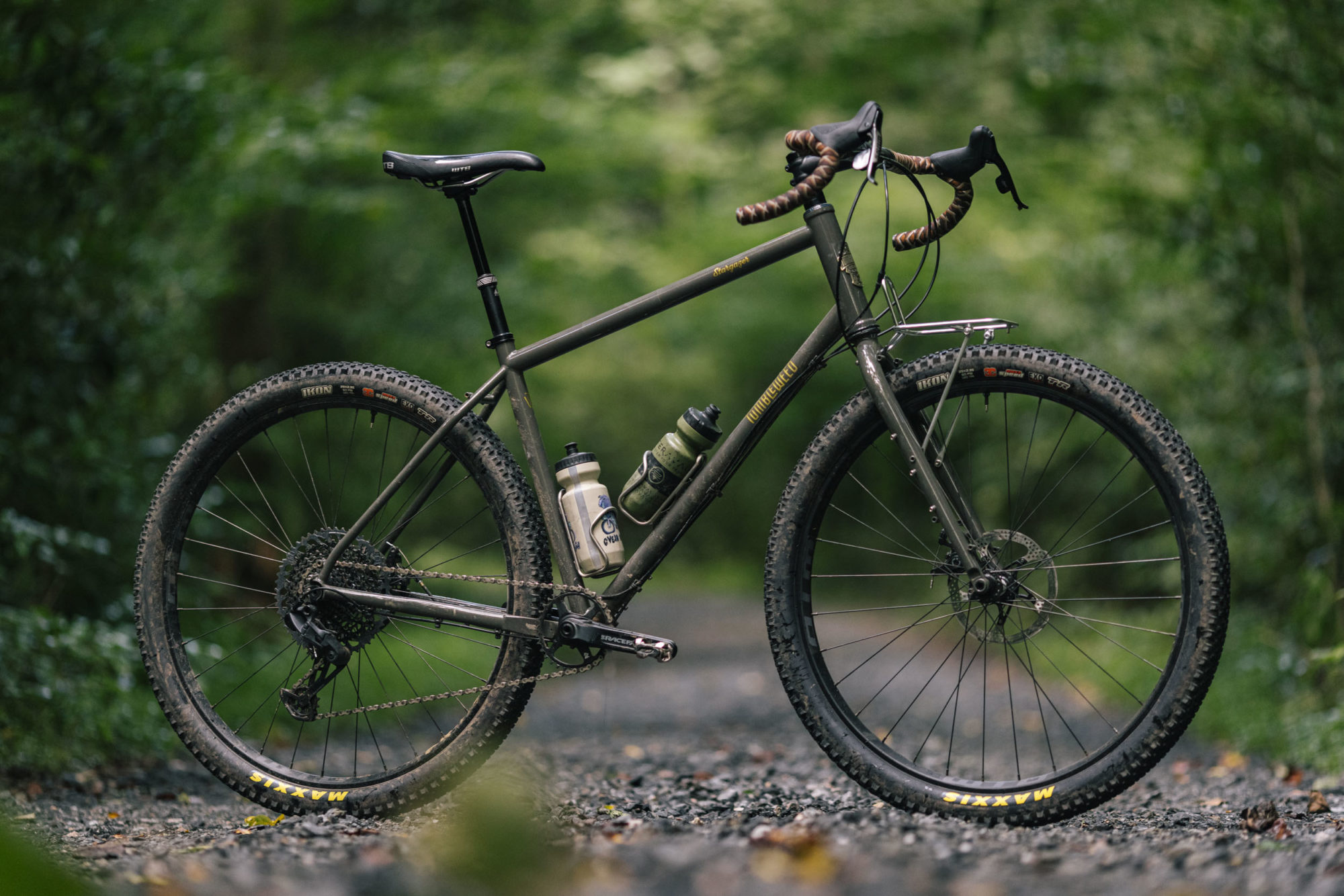
For those who aren’t familiar with Tumbleweed’s flagship model, the Prospector is a well-admired steel mountain bike that mingles old and new standards to make up an expedition-centric travel rig. The Prospector is purpose-built for a Rohloff internally geared hub using an eccentric bottom bracket for chain tensioning and a 135 QR dropout for the ease and comfort of old standards.
Aside from being built for off-road touring, the Stargazer is cut from a vastly different cloth, eschewing most old standards—aside from a steel frame and threaded 73mm bottom bracket. This drop-bar all-terrain bike is meant to be versatile and is built around Boost hub spacing, thru-axles, and a 1x-specific design, without any support for the Rohloff. That means there are probably several comment threads firing off on Facebook as we speak from the usual congregation of 2x evangelists. No matter, Tumbleweed committed the Stargazer to modern mountain bike standards for both parts and simplicity, making it fairly progressive compared to many of the other off-road drop-bar bikes on the market.
Daniel started working on the Stargazer about three years ago with the goal of it being a companion bike to the Prospector. As Daniel puts it, “The Stargazer is a lighter weight and less expensive bike than the Prospector, and really works great for people who want a super versatile off road bike that they can ride singletrack or dirt roads and take on a week long bikepacking trip, or throw slick tires on it and use as a commuter. If you have a Prospector and a Stargazer you’re covered for most types of adventure riding, short of road racing and super gnarly full suspension mountain bike stuff.”
- Highlights (Size L)
- Angles: 69° Headtube, 72.5° Seattube
- Reach/Stack: 389/653mm
- Bottom Bracket: 73mm Threaded / 63.5mm drop
- Hub specs: 148×12 (rear) / 110 x 15mm (front)
- Seatpost Diameter: 27.2mm
- Max Tire Size: 29 x 2.5” / 27.5 x 3.0″
- Price: $3,875 (complete) / $1,350 (frameset)
Tumbleweed Stargazer Specs
So, what’s the Tumbleweed Stargazer’s magic bullet? From my perspective, it aims to deliver a complete roster of modern requirements that are growing in popularity yet still seems to be very much about simplicity. For example, it’s equipped with a 73mm bottom bracket shell, 1x-specific design, and Boost spacing, in essence rescripting it as a simple modern mountain bike with drop bars and making it compatible with standard mountain bike wheels, cranksets, and bottom brackets. It’s essentially purpose-made for a mullet drivetrain with a mountain bike cassette, road shifters, and flat-mount brake calipers. Although the latter is a different standard, it’s somewhat predictive for what’s to come on this side of the industry, in my opinion.
That same absence of complications appears in its provisions for load carrying. It has all the mounts you might need for touring or bikepacking, but they’re relatively pared down. It has the standard two pairs of bottle cage mounts in the triangle, a pair under the downtube, three-pack mounts on the fork for cargo, and rack and fender mounts. There aren’t extras on the top tube for bolt-on bags, or anywhere else for that matter. Some might rightly wish for a three-pack here and there.

As it happens, while I was writing this and asking Daniel a few questions on his decisions, he let me know that he ended up making several tweaks to the production frames. One of which is that they decided to change all three of the water bottle mounts on the triangle to triple bosses (only two bolts on the seat tube for smaller sizes). On this subject, he said, “I’m not a big fan of bikes with proprietary bag mounts or excessive warts, which is why I don’t spec top tube bag mounts or frame bag mounts. We also removed the threaded boss directly above the brake caliper on the fork, which was going to be an alternative fender mount but was excessive.”
All in all, there’s nothing glaring in the specs that I dislike. If I had my way, I’d probably have the three-pack mounts on each fork leg be non-angled, which is a personal preference. And while the lack of Rohloff and 2x compatibility don’t bother me, I would love to see this bike built with sliding dropouts. It kind of begs to be set up as a singlespeed. In fact, this past weekend, I rode with a buddy on his singlespeed and decided to match his cadence and hammer out 18 miles of singletrack trails in one gear (32 x 20). The Stargazer felt right at home in that mode. That said, if you’re just dabbling in one-gear debauchery, this would be a good candidate for the PAUL Melvin tensioner.
Frame Construction
The Tumbleweed Stargazer frame and fork are designed and constructed in a very efficient and streamlined manner. Although Tumbleweed doesn’t offer what type of steel is used in the frameset, it’s clear from the look and the ride that there’s some thought put into it and that it’s made by skilled framebuilders in Taiwan. What is disclosed is that it’s constructed from a heat-treated, size-specific Chromoly tubing with oversized triple and quad-butted tubing in the front triangle. The wall thickness varies from 0.5mm to 1.1mm and there are internal gussets integrated into the tubing at the headtube/top tube and headtube/downtube junctions. According to Tumbleweed, “The steel we use doesn’t have a marketed brand, it’s a proprietary tubeset that is made in house at the factory that we use and is essentially the best steel tubing that is available in Taiwan. Every tube is heat treated, and they are the only factory that I know of that is able to integrate gussets directly into the tubesets. That’s the main reason we have them produce both of our bike models; if there was a higher end option we would be using it.”
These internal gussets allow it to retain a clean look with no external reinforced steel to muddy up the design. This is a nice complement to the straight tubes used to make up the triangle. I also quite like the relatively thin seat stays that bend in an elegant manner to connect at the dropout.
The non-suspension-corrected frame makes for a nice sized-triangle, too, even though it has a sloping top tube, which gives it a deceptively low standover. Either way, it’s slightly lower than many other drop-bar bikes, which will please dropper-post diehards looking to spec a longer travel post, or shorter riders looking for a larger frame. It also comes equipped with internal dropper routing—a personal requisite of mine—despite having a traditional 27.2mm seat post. While there aren’t really any good options for a long 150mm 27.2 dropper, I love this mix of old and new; there’s something to be said about a small seat tube diameter and ride quality, which I’ll get to later in the review. The Stargazer has external cable routing for everything else, which a lot of people will appreciate, me included.
Lastly, the oversized head tube is a nice touch, making it possible to pop in a gravel/suspension fork, like the new RockShox Rudy XPLR; the 40mm version would likely pair okay with the Stargazer’s 440mm fork length, although it would drop the front end and steepen it up a bit. There aren’t too many carbon forks in this length. The closest is probably Curve’s GMX+ fork with an axle-to-crown length of 430mm and the same 55mm offset the Stargazer’s steel fork has.
Tire Clearance
Tire clearance on the Stargazer isn’t over the top. The bike’s rear-end features a nice forged half-yoke that clears 29 x 2.5″ or 27.5 x 3.0″ rubber. However, it’s built around a moderate 29 x 2.35” tire, one that’s too big for a gravel bike and almost too small for a mountain bike, but right at home on a Tour Divide rig or a do-whatever kind of bike. In my opinion, this is the biggest tire size needed on a bike of this caliber, unless you’re looking to take on a sand-heavy route (like the Baja Divide) with drop bars. Despite the fact that my test frame has chainstays that are 10mm shorter than those on the production frames (450mm), there’s plenty of clearance with Maxxis Ikon 2.35s, as you can see in these photos. According to Tumbleweed, the stays were lengthened “to allow for more tire/mud clearance and add more fender compatibility, as well as to give more pannier/heel clearance when using racks.”
Tumbleweed Stargazer Build Kit
My test bike came equipped with the same components as the complete Stargazer that went on sale today, save a couple of odds and ends. I don’t have any complaints about this kit, and I’m particularly impressed by the drivetrain. As mentioned, the Stargazer is designed around a 1x mountain bike drivetrain and Boost wheels. To tie it all together, and come close to the range of the Rohloff (526%), Tumbleweed used the Ratio Technology 12-speed drop bar shifter kit to modify a SRAM Rival 1/Eagle GX mullet, which provides the 520% gear range of a mountain bike without the need for a front derailleur. “I basically specced the Stargazer around the Ratio kit,” said Daniel. “I also wanted to dedicate the left shifter to be the dropper seatpost trigger, it just feels like such a natural place for it to be.” Check out the full build kit below.
- Frame: Large Stargazer (Starry Night)
- Fork: Steel 110mm, Thru Axle, Unicrown
- Headset: Cane Creek 40ZS upper, EC lower, 30mm Crown Race
- Crankset: RaceFace Aeffect, Black, Cinch Direct Mount
- Chainring: RaceFace, Black, 32t Direct Mount, Steel
- Bottom Bracket: RaceFace BSA Threaded
- Front Hub: DT Swiss 350, Black, 110mm Thru Axle 32 hole
- Rear Hub: DT Swiss 350, Black, 148x12mm 32 hole, SRAM XD driver
- Rims: WTB KOM i30 (complete specced w. RaceFace Arc 30 Offset)
- Spokes: Sapim Race
- Cassette: SRAM GX Eagle 10-52 tooth
- Shifter SRAM Rival 1 with Ratio 1×12 Upgrade
- Rear Derailleur: SRAM GX Eagle
- Brake Levers: SRAM Rival 22
- Brake Calipers: Tektro MD-c550
- Cables and Housing: Jagwire Pro Compressionless, Stainless Cables
- Disc Brake Rotor Adaptors: Tektro
- Brake Rotors: SRAM Centerline, 180mm front, 160mm rear
- Tires: Maxxis Ikon, 29×2.35 EXO 3C TR
- Chain: SRAM, GX Eagle
- Bar Tape: Zoom, Black 31.8mm 4 bolt
- Stem: Camp and Go Slow Rattler, extra long
- Handlebar: 54cm Curve Walmer (stock comes w/ PNW Coast 52cm)
- Seatpost: PNW Rainier, 27.2mm, 125mm travel
- Saddle: WTB Pure V
I was also impressed by the 2.35” Ikon tires. They’re fast, corner well, and when run at about 20PSI, they offer the perfect amount of cushion to complement this bike. A couple of other highlights include the CampAndGoSlow Rattlesnake bar tape and the PNW dropper.
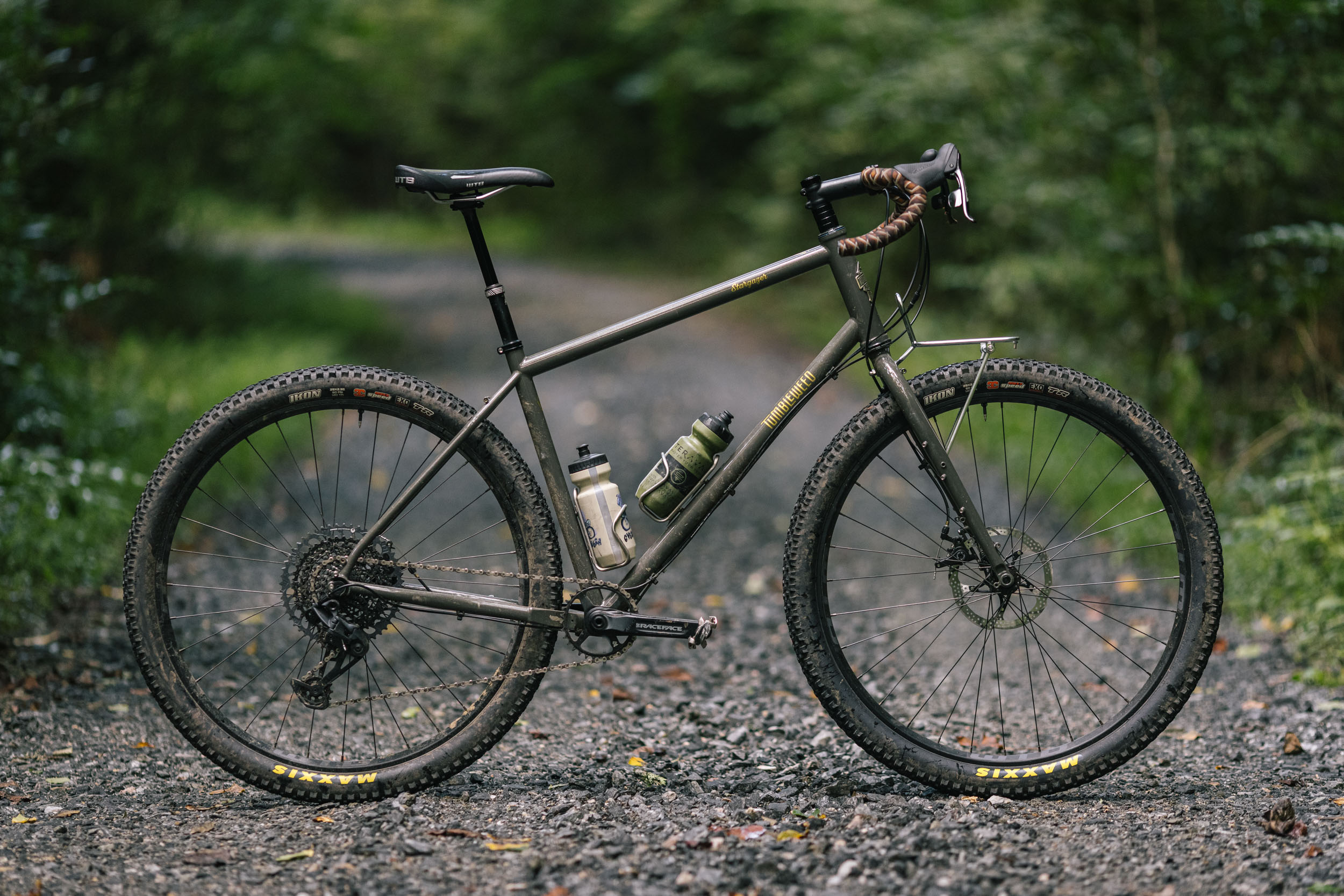
Geometry (and Ride Feel)
On paper, there’s not too much that jumps out about the Tumbleweed Stargazer’s geometry, aside from its relatively high stack height. Otherwise, its angles, lengths, and numbers aren’t too dissimilar from the usual suspects in this class: the Kona Sutra LTD (ULTD) and Salsa’s Cutthroat and Fargo.
| Geo | S | M | XM | L | XL |
|---|---|---|---|---|---|
| Effective Top Tube Length | 535mm | 555mm | 575mm | 595mm | 615mm |
| Seat Tube Angle | 73.5° | 73° | 73° | 72.5° | 72.5° |
| Seat Tube Length C-T | 380mm | 430mm | 460mm | 490mm | 545mm |
| Head Tube Length | 115mm | 140mm | 175mm | 200mm | 220mm |
| Heat Tube Angle | 69° | 69° | 69° | 69° | 69° |
| Fork Offset | 55mm | 55mm | 55mm | 55mm | 55mm |
| Chainstay Length | 450mm | 450mm | 450mm | 450mm | 450mm |
| Bottom Bracket Drop | 63.5mm | 63.5mm | 63.5mm | 63.5mm | 63.5mm |
| Stack | 574mm | 597mm | 630mm | 653mm | 672mm |
| Reach | 365mm | 372mm | 382mm | 389mm | 403mm |
| Standover Height | 750mm | 784mm | 815mm | 840mm | 875mm |
| Fork Axle to Crown | 440mm | 440mm | 440mm | 440mm | 440mm |
There are a couple numbers that differentiate it a little bit, however. One is the Stargazer’s 63.5mm bottom bracket drop. I wouldn’t consider it too high, but it’s higher than that of any of the Salsas and Kona mentioned above by 8 or 10mm. According to Daniel, “I wanted the Stargazer to have the pedal clearance of a mountain bike for navigating rocky singletrack climbs, and the BB won’t be too low if you did want to put somewhat narrower tires on for commuting.”
Another such number that deviates from the norm isn’t listed on the standard geo chart,, but if you run the calculations, its 69° head tube angle and 55mm fork offset give the Stargazer 83.4mm of trail in its current configuration, which I would consider high, like mountain bike high. In fact, it’s much higher than any of the drop-bar bikes I’ll discuss for comparison below. As such, it’s also much more stable on descents and at high speeds than any of them, something that was evident from my first ride. It feels like a mountain bike because it is a mountain bike, really.

How it All Translated in the Ride
The Stargazer is yet another bike that I may have looked at on paper and shrugged a little. There are some interesting, subtle nuances, but my semi-educated ego might have told me that the BB was too high, the stack was too much, or the seat tube was too slack for my taste. However, this bike surprised the hell out of me. To escape the crowds this summer, I rode the Stargazer on a lot of lesser-used two-track and backwoods singletrack during my test period. Aside from the lovely comfort characteristics I mentioned in the Frame Construction section, and its descending stability, a few other things stood out. One is that it still very much has an in-the-bike feel. This might be owed in part to the high stack, but it simply feels like it’s an extension of my body, rather than something I’m sitting on, if that makes sense. It also handles and corners extremely well, and is just plain fun to ride, making it quite similar to the ULTD in that manner. Another standout characteristic is that it seems to exhibit much better traction than many bikes I’ve tried, and sticks to the trail better, both when cornering and climbing. On many occasions, there were steep and rather wet climbs where I was shocked when it didn’t spin out under a lot of torque.
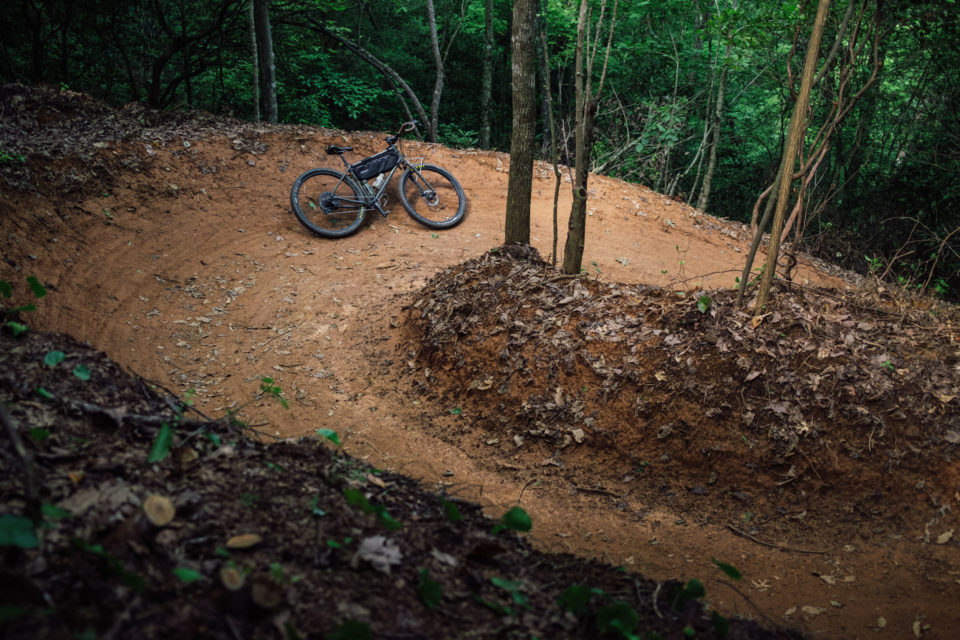
The Stargazer also felt comfortable and composed on longer gravel roads and climbs. The high trail didn’t seem to wander, as some folks might expect. But coming from a mountain bike background, I might be a little less forgiving than a road biker in that trait. Either way, my conclusion is that this bike pedals really well and is one of those bikes you can spin on for hours without getting exhausted or uncomfortable. That being said, I did have a little fit issue at first. This bike has a little shorter reach than others (11mm shorter than the ULTD) and a higher stack, so I had to fiddle with the stem a little. I might even consider sizing up to an XL if I were to purchase one.
Tumbleweed Stargazer vs Kona Sutra LTD/ULTD
The first bike that folks might be interested in comparing the Stargazer to is the Sutra LTD (formerly the Sutra ULTD). The two have a similar look and were made to accomplish similar tasks. For reference, I’m comparing the large Stargazer to the 56cm ULTD/LTD, which is the equivalent size for my 6’0” (1.83m) frame. The Stargazer has a .5° slacker seat tube and headtube angle, as well as a 11mm shorter reach and a 5mm longer chainstay. But the biggest difference is the Stargazer’s whopping 26mm higher stack height and 8.5mm higher bottom bracket. On paper, aside from the fact that it has a slacker headtube, you’d think these differences would add up to the Stargazer being less playful. However, on the contrary, I felt the two were right in line, and the Stargazer felt substantially quicker out of the gate. That being said, my test bike had 10mm shorter chainstays than the production model, so I’d bet the ULTD/LTD maybe comes off as a little more nimble in the corners with its substantially lower BB and 5mm shorter chainstays. However, the Stargazer’s higher trail and slacker head tube might even things out.
In summary, I’d say each has its own set of advantages that will make the choice more complicated for those weighing the two options. The LTD has more dropper seatpost options with its 31.6 seat tube, non-angled fork mounts, more mounts in general for bolt-on bags, and comes in at about half the price for a frame/fork combo. On the other hand, the Stargazer has a few geometrical nuances that might be more touring friendly (a higher stack and slightly longer chainstay), and it’s even better suited for mountain biking, with a higher BB for pedal clearance and a slacker head tube angle. As I mentioned, it’s certainly more sure and stable on descents. The frame also seems more forgiving and supple in the rear, likely due to both the stay design and the smaller 27.2mm seat tube. I also think it’s a little livelier feeling and a tad quicker, but that may be partially owed to it having a better and lighter build kit than that of the ULTD I tested. But I also might attribute a better ride feel to the Stargazer having a higher quality frameset, as discussed under Frame Construction above. However, that’s hard to qualify without knowing the intricate details of the butting, construction, and types of steel used on the ULTD. Last but not least, the Stargazer has front and rear Boost 110/148mm spacing, and thus larger tire clearance and probably more wheel options these days.
Tumbleweed Stargazer vs Salsa Cutthroat
The Salsa Cutthroat is another bike that’s quite similar in numbers to the Stargazer. The most glaring differences are again the 6.5mm higher bottom bracket on the Tumbleweed and its 1.5° slacker seat tube angle. It’s a little more difficult to compare these two bikes directly because, well, they’re made from completely different materials. I think they ride fairly similarly in terms of stability and capability, so the main thing to consider is the actual weight. A medium Tumbleweed Stargazer frameset weighs in at 8.85 pounds (4kg) with an uncut steerer—medium frame weighs 5.75 pounds, the uncut fork is 3.1 pounds. A 60cm (XL) Cutthroat tips the scales at 5.1 pounds (2.3kg). That leads me to believe that a medium (56cm) frameset probably comes in under 5 pounds, which is nearly 4 pounds lighter than the Stargazer frameset.
Tumbleweed Stargazer vs Salsa Fargo
Although they don’t really look too much alike, the Salsa Fargo is probably the closest cousin to the Stargazer, geometrically speaking. All the numbers are pretty similar and they share a 69° head tube angle. Plus, they’re both Boost-spaced bikes. Of course the Fargo has a long carbon fork, about 20mm more stack height, and more tire clearance. I haven’t spent much time on a newer Fargo, so I can’t really compare the two from a ride perspective, however.

While Out Bikepacking
As far as loading this sucker up and heading out, honestly, there’s not too much to report beyond what I’ve already covered pertaining to the ride quality of the Stargazer. On one occasion, I packed it with a significantly heavy load—complete with a rack, fishing equipment, a camp chair, an extra tarp, and two days’ worth of food and evening beverages. It still had the same responsive feel and didn’t come off as noodly or twitchy at all. I know Tumbleweed is positioning this for more light touring than the expedition-hungry Prospector, but I wouldn’t be scared to take it down the Great Divide or any other extended mixed-terrain route.

- Model/Size Tested: Large Tumbleweed Stargazer
- Actual Weight: 28.69 pounds (13.01kg)
- Place of Manufacture: Taiwan
- Price: $3,875*
- Manufacturer’s Details: tumbleweed.cc
*The Stargazer is available in two colors: Starry Night and Bone. Frameset including frame, fork, seat clamp, and front/rear thru-axles will retail for $1,350. Complete bikes with the build kit listed above start at $3,875 with upgrade options available. A very limited number of complete bike builds will be offered for the first run of Stargazers. The presale for the Stargazer begins Tuesday, August 17, 2021, at 9am MT. Delivery of frames is anticipated December 2021, with complete bikes built to order and delivered in the order that deposits are placed.
Pros
- Versatile geometry is comfortable to pedal and super stable descending and going fast on the rough stuff
- Great paint job and aesthetics
- Solid yet simple mix of specs geared toward bikepacking and off-road use
- Excellent frame design and constriction that adds up to a lively, quick, and comfortably compliant ride
Cons
- The move to a 450mm chainstay makes sense, but I like the 440mm length on the test model I was riding and would keep it that way
- To solve that, I’d love to see this bike with a sliding dropout
- If I’m being super picky, I’d prefer non-angled mounts on the fork
Wrap Up
Truth be told, prior to this one, I was growing a little tired of drop-bar bikes. I generally prefer flat bars, mountain bikes, and singletrack, and I was just kind of bored of bikes with drops after a long winter and spring filled with a lot of gravel riding. The Stargazer changed that. I found myself rolling it out of the shed for long singletrack/mixed rides on a fairly regular basis, picking it over the two mountain bikes I currently have in the stable. I think the reason for that is because it pedals efficiently for a bike with 2.35” tires yet still rips in the corners and descents.
That leaves me wondering who exactly this bike is for, which is kind of tricky. I think you could judge it based on two hypothetical charts to help figure it out. One being surface riding preference, with dirt on the left side of the chart and pavement on the right. The other being handlebar preference with drops on the left and flat bars on the right. If your two answers lean toward the left side of the graphs, I think this could be your one bike, as long as the dirt you’re seeking isn’t super gnarly singletrack. On the other hand, if this is your second bike, it could certainly complement a bigger hardtail or full-squish, as long as your preferences don’t tend too far toward the right side of those graphs.
To sum it up, the Stargazer is in a class of bikes that has a few good options to choose from, many of which are a little easier on the wallet. However, it’s also quite unique. It has all of the mounting points you could hope for, a substantial frame triangle for fitting a bag, and a very nice roster of specifications. The frame also seems very well designed, offering a fairly supple ride for its beefy mountain bike-esque stature. And of course, Tumbleweed nailed the aesthetics with two nice colorways and classic styling for the graphics. It’s not without cons, as listed above, but it definitely ticks a lot of boxes and does so in a very forward-thinking manner…
Tumbleweed Stargazer Review (video)
Tumbleweed launched the Stargazer last month, the adventure-forward brand’s second bike. Even with so many drop-bar mountain bikes on the market, the Stargazer stands out among the crowd. Tumbleweed didn’t reinvent the wheel, but they certainly improved it. The result is a fun, stable, and efficient steel rig that’s ready for day rides on singletrack and month-long excursions alike. Neil walks through how Tumbleweed accomplished this in our latest detailed video review…
More on Tumbleweed
Please keep the conversation civil, constructive, and inclusive, or your comment will be removed.













